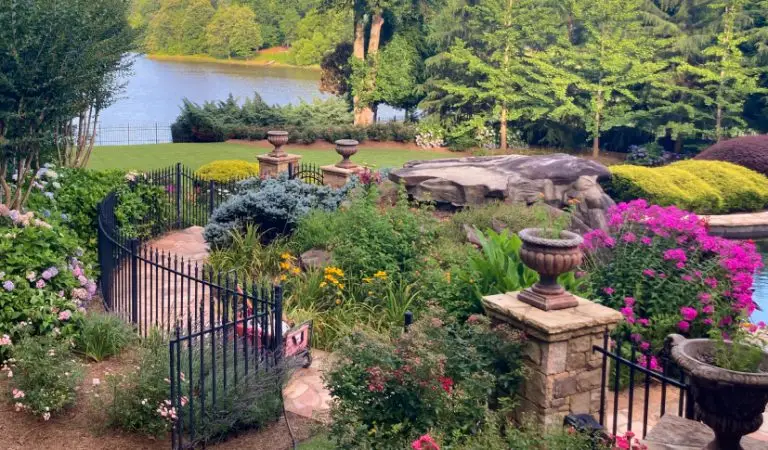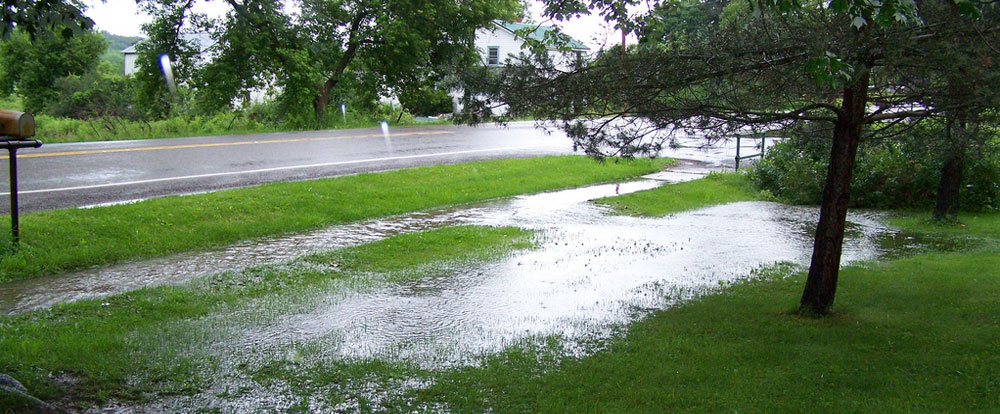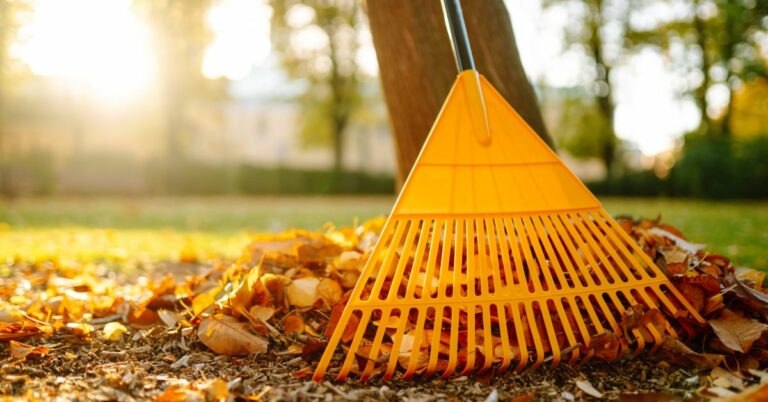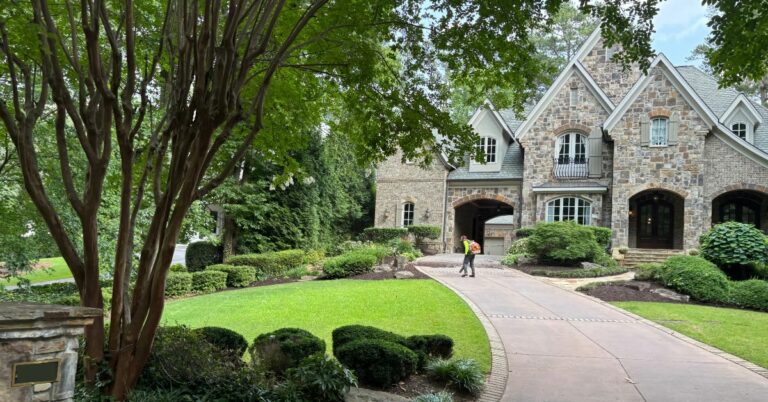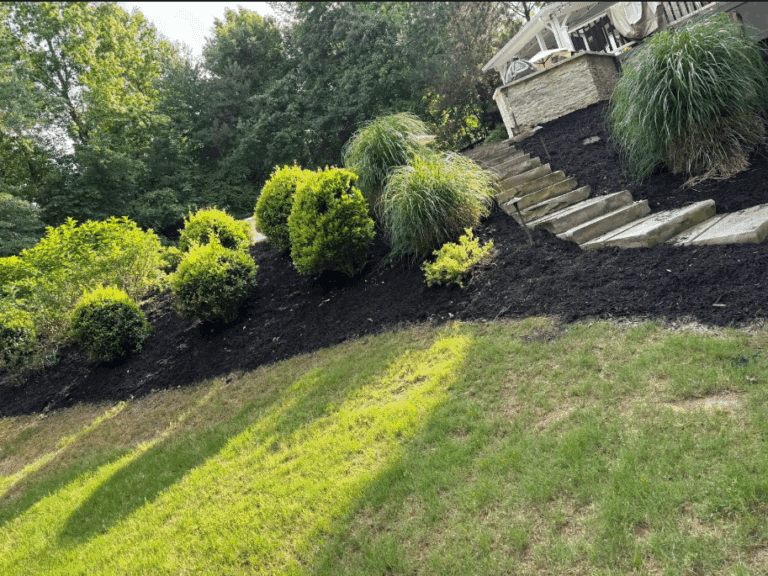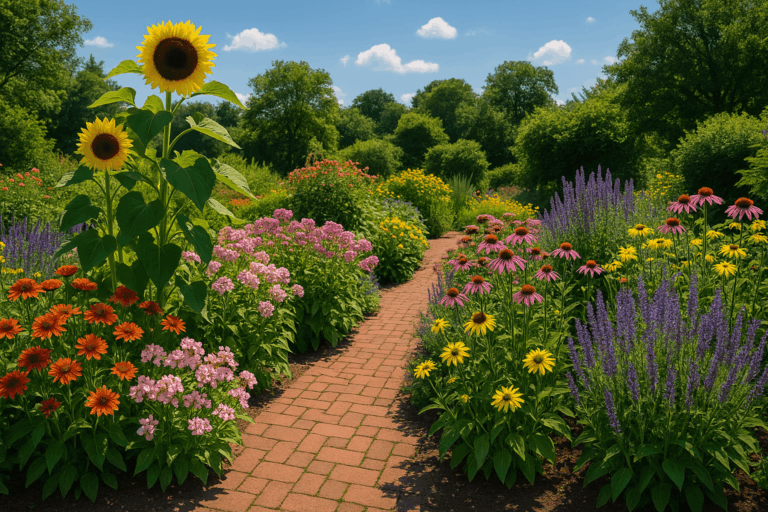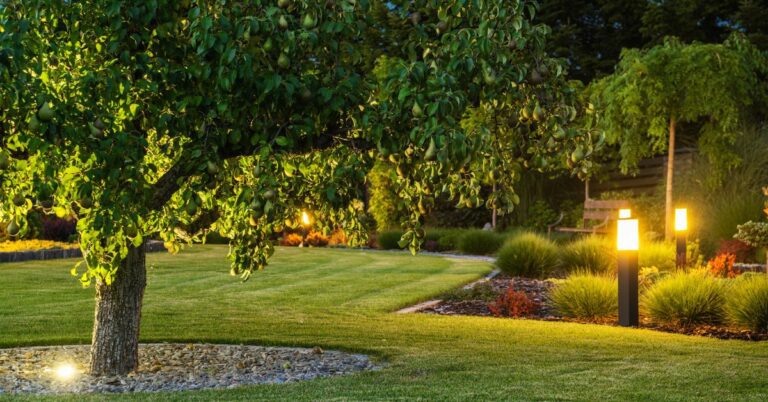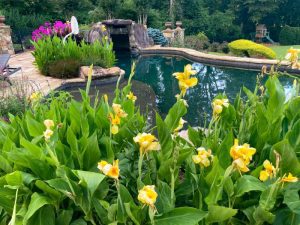Does your landscape stand with water after a storm? Our five drainage solutions can help make your yard usable again.
Catch Basin
During heavy rain, soil reaches a saturation point where it can no longer absorb water. Added runoff from nearby hard surfaces makes the problem worse.
Without proper drainage, that water has nowhere to go.
A catch basin is a yard drainage solution involving a grate, a dry well, and a pipe. A type of surface water yard drain, it performs like a traditional storm drain.
Catch basins “catch” and hold water in a basin or dry well. Once the water reaches a certain level, it travels through the pipe to another location.
Catch basin drains prevent flooding. Because they’re installed below the surface, they won’t disrupt your landscape. Aside from the grate, they’re virtually unnoticeable.
If you’re looking for a simple, unobtrusive solution for a soggy lawn, a catch basin is a great choice.
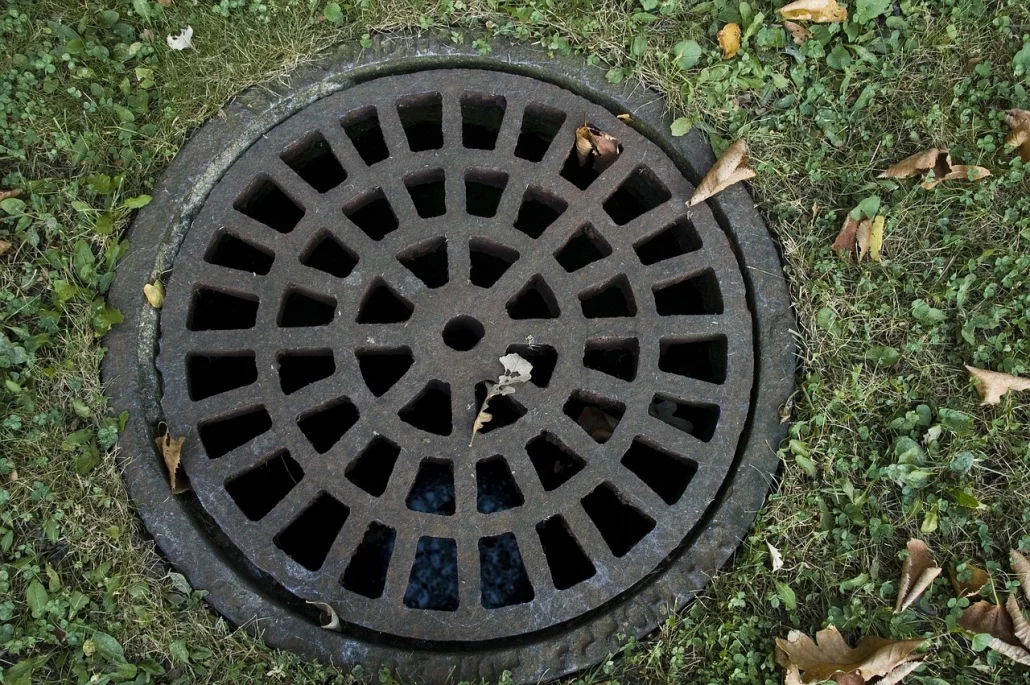
French Drain
A French drain is a gravel-filled trench. Commonly, these trenches also contain a perforated PVC pipe (also called a drain tile.)
Before adding the perforated pipe and gravel, installers cover the trench with heavy landscape fabric. This fabric helps prevent weeds from growing up through the gravel. It also helps keep soil and silt from accumulating in the trench.
French drains channel water from areas of your yard toward an exit point. The exit point can be a grassy swale, a rain garden, or other suitable drainage area.
Some people choose to landscape their French drain to make it aesthetically pleasing or cover it with a couple of inches of topsoil and sod.
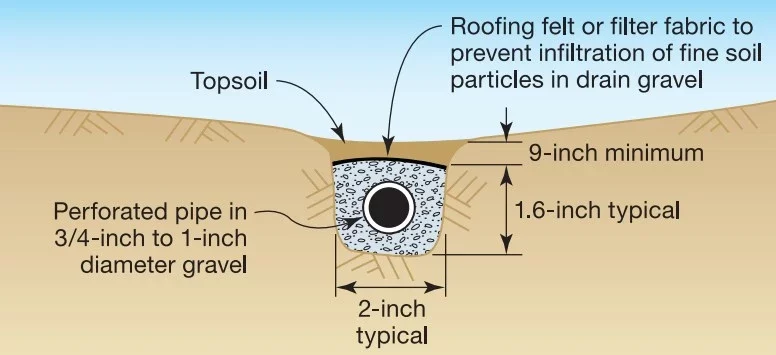
Dry Creek Bed
A dry creek bed is exactly how it sounds. It’s a gully or trench in the landscape that mimics the look of a stream, sans water.
When it rains, dry creek beds help water flow to a desired area.
Rather than running in a straight line like most French drains, dry creek beds tend to meander. The shallow bed is lined with landscape fabric to prevent weeds. A layer of sand or gravel tops the landscape fabric, followed by stones in various sizes and shapes or rounded river rocks.
The dry creek bed adds visual interest to your landscape on its own. However, many homeowners choose to take it one step further by adding decorative shrubs, native plants, and even lawn ornamentation.
Dry creek beds help prevent erosion, keep water from standing in your yard, and beautify your landscape.
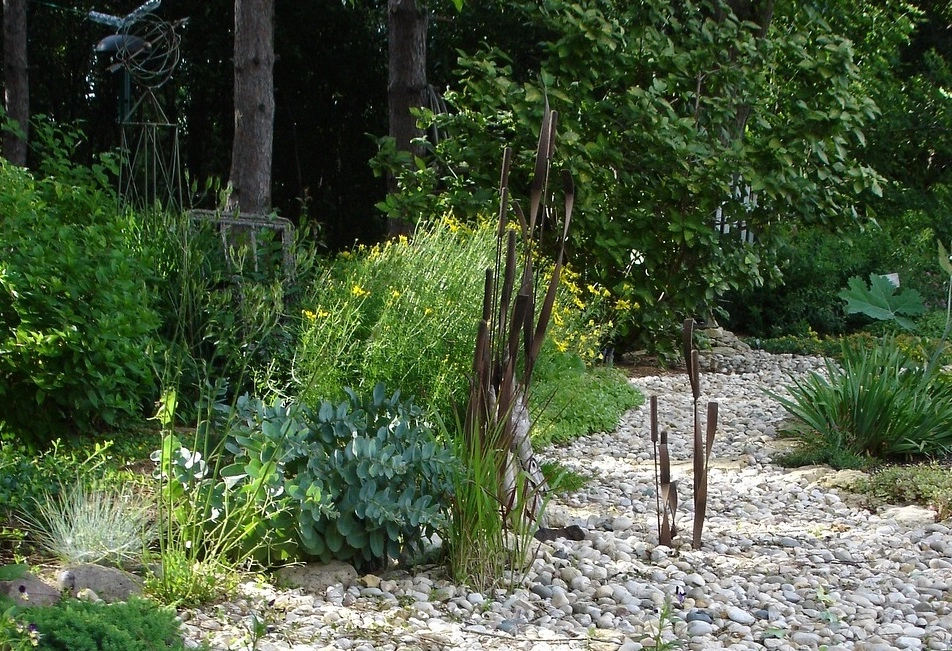
Grassy Swale
A grassy or grassed swale is an open channel to collect rainwater, similar to a ditch. However, traditional drainage ditches usually feature hard surfaces. In contrast, grass covers the side slopes and main channel bottom of a grassy swale.
If you live in an area with a lot of runoff from paved areas like driveways, patios, and roads, a grassy swale can help. Stormwater makes its way into the swale, where the vegetation along the side slopes slows it down.
Additionally, the soil beneath the swale absorbs some of the water. According to the EPA, this results in sedimentation, which helps keep sediment and other pollutants from entering waterways downstream.
Grassy swales are particularly effective when used in combination with other drainage systems. For example, they can channel water to a retention pond or one of our favorite drainage solutions, a rain garden.
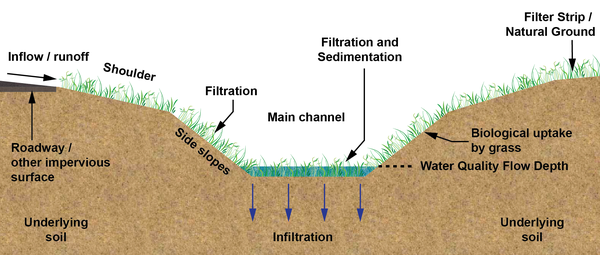
Rain Garden
A rain garden is proof that drainage solutions don’t have to be boring.
Rain gardens are manmade depressions in the landscape that capture water. The shallow (<12 inches) basin holds onto excess water for a short time, allowing it to soak into the soil.
This reduces runoff by as much as 30%. That’s helpful to both the environment and our water supply. However, that’s not the best part.
The “garden” aspect of rain garden refers to water-tolerant flowers and plants. Yellow flag iris, ferns, and ornamental grasses are great choices for rain gardens. You can also include black eyed Susan, swamp milkweed, canna lilies and more.
If your rain garden is on the larger side, try adding shrubs like oakleaf hydrangea or even trees like Sweetbay magnolia.
A rain garden is low maintenance once established and can provide a habitat for both frogs and pollinating insects. They also create the perfect opportunity to add texture and color to your landscape.
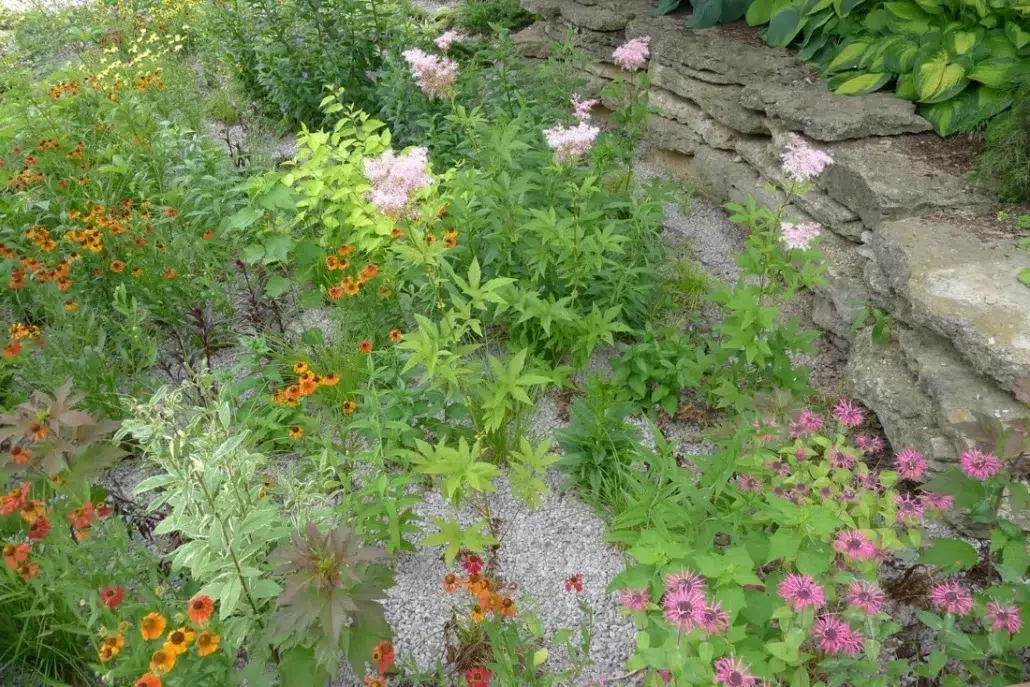
Don’t Let a Wet Yard Get You Down. Contact Us for Drainage Solutions.
If left unattended, drainage problems will detract from the appearance and usability of your landscape. Moreover, they can cause erosion and even structural damage.
Creech Landscape can help with your yard drainage problems. Give us a call at 770-988-4635.

